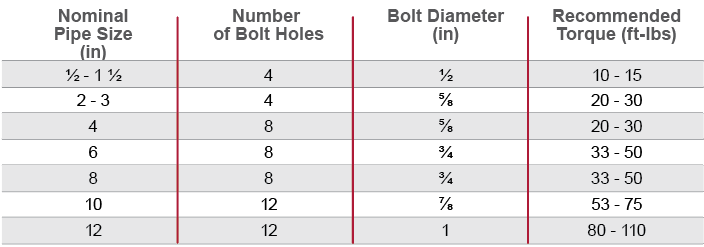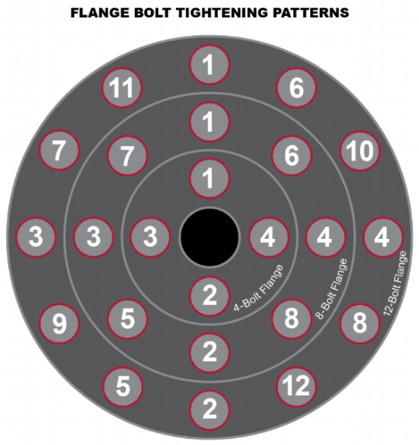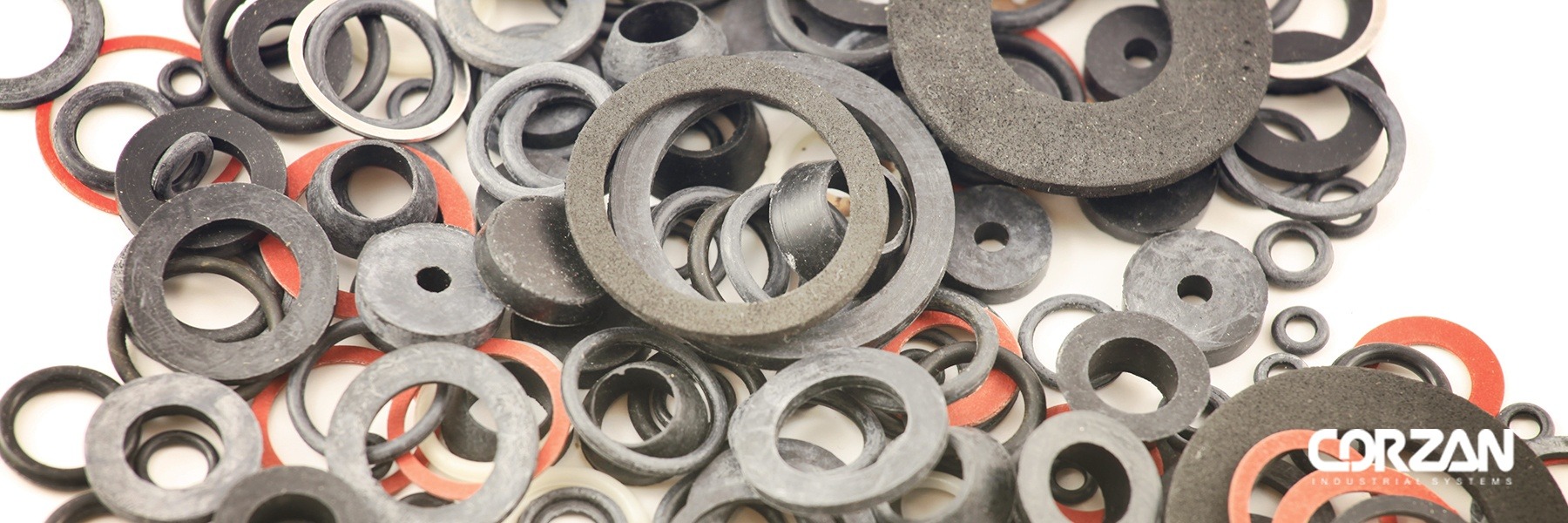How to Choose the Correct Gaskets for Your Industrial Piping System
In any piping system that uses flanges, gaskets are crucial. Gaskets are placed between flanged system components to create strong seals that stop leaks and provide greater reliability.
As with piping material, gasket selection and installation play significant roles in the overall performance and life expectancy of a piping system. Specifically, plant maintenance personnel and engineers must consider piping system compatibility, physical properties of the gasket, and installation specifics.
Corzan® Industrial Systems’ team of engineers and product specialists recommend starting your search with the fluid flowing through your system.
Compatible Gasket Materials
Gaskets are available in a variety of materials for the simple reason that no one material can stand up to the demands of every application.
When specifying a gasket material, first consider the fluid flowing through the piping system. Acids, bases, and salts all interact with materials at the molecular level in their own unique ways. Choosing a material inert to the effects of your fluid ensures a strong joint that maintains performance and pressure for the life of the system.
It’s also important to consider the impact of heat on the material. Industrial applications often require fluid to satisfy a specific temperature. Heat affects all materials, and the more heat, the more unstable a compound’s molecules become. That said, different materials inherently–or through specialized engineering–stand up better to elevated temperatures than others.
Compatibility with the piping material itself is another consideration. Certain gasket materials can leach into CPVC, creating small fractures that weaken the material and, consequently, the pipe joint.
Gasket lubricants are often used to improve the gasket’s seal within a joint. The incorrect lubricant can break down the CPVC over time, again weakening the material and joint.
For help finding the most compatible gasket material, visit Corzan Industrial System’s Compatible Product Finder. This free tool lists the most reliable products to use with your CPVC piping system.
The Physical Properties of a Gasket
In addition to compatibility requirements, the physical characteristics of the gasket must align with the demands of the system. Corzan Industrial Systems recommends piping gaskets be:
- Full-faced, covering the entire surface of the flange with holes for bolts.
- A hardness of 55-80 durometer A, allowing just enough compression for a tight seal between flanges.
- A minimum 1/8-in. thick.
Upon securing the appropriate gaskets for your piping system, proper installation is the next step.
Gasket Installation and Maintenance
When installing a gasket, you must apply the appropriate torque and tighten each bolt in the proper order. This ensures that even, optimum pressure is applied and that the surfaces of the joint align flush with the gasket and each other.
The challenge with gaskets is that uneven or too little pressure can create openings for leaks. At the same time, too much compression can damage the structural integrity of the gasket, limiting its performance.
It’s worth noting at this point that gaskets should always be replaced when a joint is loosened for maintenance or repair. Most industrial gaskets are not designed for repeat compression.
CPVC Torque Requirements
Proper torque is important for gasket installation and to ensure the flange or valve union isn’t damaged. Over-compression can structurally jeopardize the gasket material and place excessive stress on the joint. For Corzan CPVC pipes, our engineers have determined the appropriate flange bolt torque for various pipe sizes.

The torque order is the final step in proper installation. By tightening bolts in the proper order, you ensure that pressure is evenly applied over the gasket and flange. For Corzan CPVC pipes, following a typical star pattern when tightening bolts ensures the flange surfaces are entirely flush against each other.

For questions about gasket selection or installation, contact our team of product and engineering specialists.


